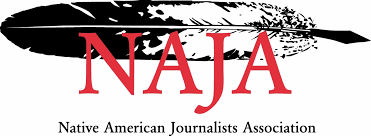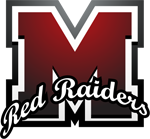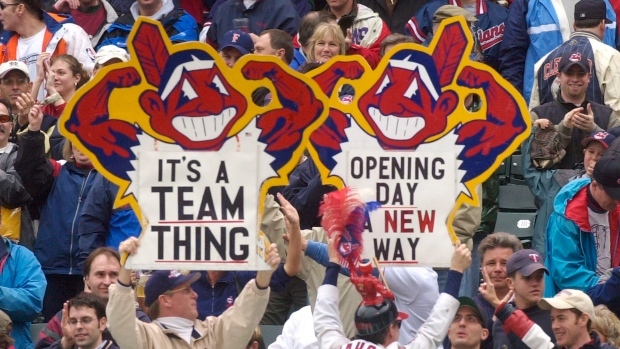
November 3rd, 2016- The Native American Journalist Association released an official call out on October 27th, 2016, to all media professionals including those in the sports industry to “eliminate the use of Native American-themed mascots and imagery.†(NAJA) This call out is in light of the recent Major League Baseball World Series between the Cleveland Indians and the Chicago Cubs. NAJA believes that “the Cleveland team’s “Chief Wahoo†logo, in conjunction with its name, perpetuates a stereotype based on the race and ethnic identity of Native people.â€
“It is our recommendation that sports journalists and media organizations adopt a culturally sensitive policy that refers to the Cleveland MLB team by the city name and league only and eliminates the use of the “Chief Wahoo†logo. This policy satisfies the ethical requirement for accuracy while omitting the harmful and stereotypical imagery.†–NAJA
Although controversies surrounding major league sports teams with Native American-themed mascots have continued for many years, the success of the Cleveland Indians this season has furthermore fueled the fire for this conversation. NAJA claims that the imagery is “dehumanizing†and also leads to “dehumanizing actions†towards Native people. They believe that the continued use of this type of imagery by mainstream and sports media is “wholly unethical.â€
The Cleveland Indians “Chief Wahoo†symbol was introduced in 1928, and has taken on seven different variations. The current logo has remained the same toothy grinned caricature since its 1951 adaptation. Protests against the Indians “Chief Wahoo†mascot began taking place in Cleveland, OH in 1970.
During the 2016 American League Championship Series between Cleveland and the Toronto Blue Jays in October, Indigenous Activist Douglas Cardinal filed a lawsuit in the Supreme Court of Justice in Toronto, requesting an injunction to block the use of the teams name and “Chief Wahoo†logo within the province of Ontario. Cardinal’s lawyer argued that using racially discriminatory caricatures is a direct violation of Ontario human rights codes, and requested that the games be played out in the team’s spring training uniforms which do not depict either name or logo.

The arguments were dismissed by the Supreme Court of Justice, and the game was played as scheduled.  Douglas Cardinal is an Indigenous Activist and architect, having designed prominent buildings such at the National Museum of the American Indian in Washington D.C., as well as many others across Canada and the US.  It is a noteworthy fact that the Toronto Blue Jays announcer, Jerry Howarth, has refused to speak offensive team’s names on air since 1992, after receiving a fan letter explaining how offensive it was.
Howarth told Sports Illustrated recently, “He said, ‘Jerry, I appreciate your work, but in the World Series, it was so offensive to have the tomahawk chop and to have people talk about the ‘powwows on the mound’ and then the Cleveland Indians logo and the Washington Redskins.’ He just wrote it in such a loving, kind way. He said, ‘I would really appreciate it if you would think about what you say to those teams. For the rest of my career I will not say ‘Indian’ or ‘Brave’ and if I was in the NFL I would not say ‘Redskins’.â€
The National Congress ofAmerican Indians (NCAI) has had a long standing opposition to harmful Native American-themed sports mascots, having launched the first campaign to address the stereotypes of Native people in pop culture, media, and sports in 1968. “Born in an era when racism and bigotry were accepted by the dominant culture, “Indian†sports brands have grown to become multi-million dollar franchises. The intolerance and harm promoted by these “Indian sports mascots, logos, or symbols, have very real consequences for Native people.â€(NCAI)
There has been massive support within Indian Country for the recall of these mascots throughout all sports, from major league to high school league, as the result of ongoing advocacy and education. According to NCAI, since 1963 no professional teams have established any new mascots depicting racial stereotypes. Also, in 2005 the NCAA developed and established extensive policies removing harmful “Indian†mascots within college and universities. In the past 35 years over 2,000 “Indian†references involved in sports have been eliminated, yet nearly 1,000 remain today.
Akwesasne Mohawk students who have attended a local high school in Massena, NY have experienced this racial stereotype firsthand with their use of the “Red Raiders†symbol and mascot. In recent years petitions have been started to abolish the “Indian†head logo, and the word “Red†from their school emblem to simply be the Massena “Raiders.â€
 Massena Central District High School has banned the use of the Indian mascot, and simply uses an ‘M’. The name “Red Raiders†still stands to this day. In 2001, the New York State Education Department Commissioner at the time, Richard P. Mills, called for the retirement of institutionalized “Indian†sports team nicknames, mascots, and logos from all public schools, concluding that “Indian mascots and symbols can make the school environment seem less safe and supportive to some children, and may send an inappropriate message to children about what is or is not respectful behavior toward others.â€Â At the time there were 135 high schools within New York State that still used “Indian†mascots and/or team names. The action taken by the Education Commissioner in 2001was welcomed by some while others thought that too much discretion was left up to the local school boards. The action taken was originally supposed to call for the retirement of all institutionalized “Indian†themed sports teams, however Commissioner Mills allowed each school board to decide on their own accord.
Massena Central District High School has banned the use of the Indian mascot, and simply uses an ‘M’. The name “Red Raiders†still stands to this day. In 2001, the New York State Education Department Commissioner at the time, Richard P. Mills, called for the retirement of institutionalized “Indian†sports team nicknames, mascots, and logos from all public schools, concluding that “Indian mascots and symbols can make the school environment seem less safe and supportive to some children, and may send an inappropriate message to children about what is or is not respectful behavior toward others.â€Â At the time there were 135 high schools within New York State that still used “Indian†mascots and/or team names. The action taken by the Education Commissioner in 2001was welcomed by some while others thought that too much discretion was left up to the local school boards. The action taken was originally supposed to call for the retirement of all institutionalized “Indian†themed sports teams, however Commissioner Mills allowed each school board to decide on their own accord.
Native Americans have dealt with a great deal of systemic racism for many generations, and still face these challenges to this day. Before the 19th Amendment was passed, granting American women the right to vote, Native Americans weren’t even citizens of their own country. It wasn’t until June 2, 1924 that Natives were granted citizenship, under the Indian Citizenship Act; and until 1957 most states barred Natives from voting.
For example, the Washington Redskins NFL team was born in 1937, a Washington, D.C. based team. The name “Redskin†is a historically derogatory name that was used to describe “Indiansâ€, at a time when folks were paid to scalp native people. 1491s Co-Founder Dallas Goldtooth told Indian Country Today Media Network that, “it was only five generations ago that a white man could get money for one of my grandfather’s scalps. At this time… it was “Redskin†that was used to describe us.†
Unfortunately the continued utilization of indigenous symbolism that promotes the marginalization of indigenous peoples across the United States has major impacts on Native Peoples cultural identity, the intergenerational trauma, and the reality of the use of names such as “Chief Wahoo†have on indigenous cultures.

While Native Americans find these “Indian†names stereotypical, the latter side argues the established “traditions†and “history†of the team’s name, while claiming to have stories of honoring the Native people they are depicting. As sports teams continue to propagate derogatory imagery it leads to the wonderment, is it truly an honor?
BY: Ohseraseia:hawi


